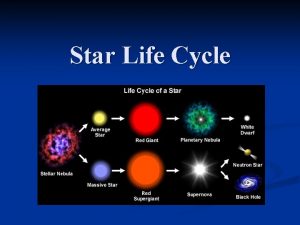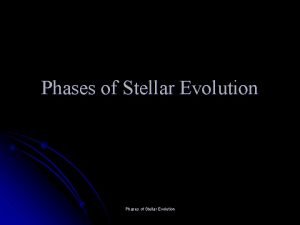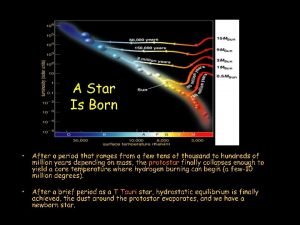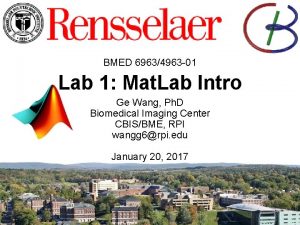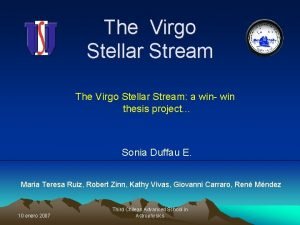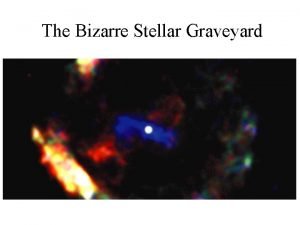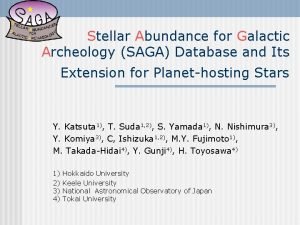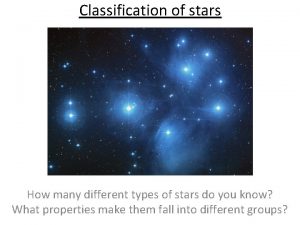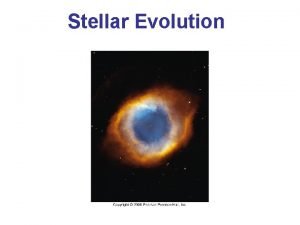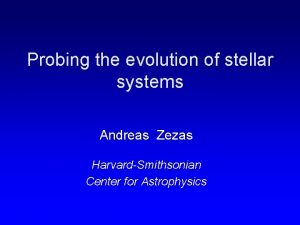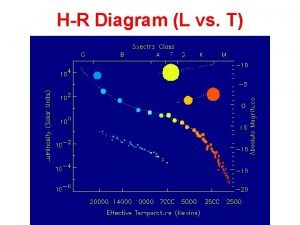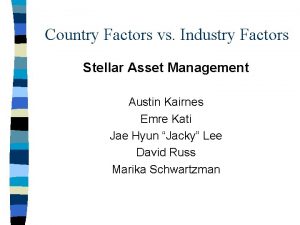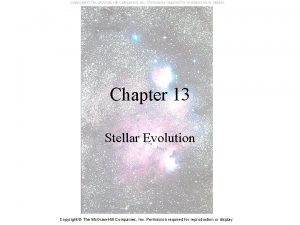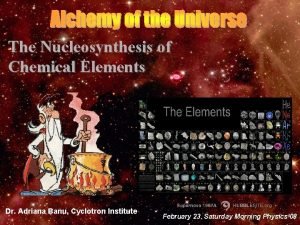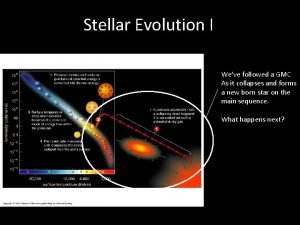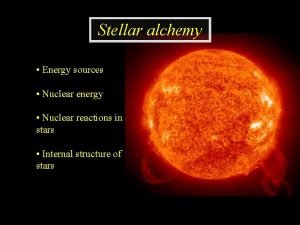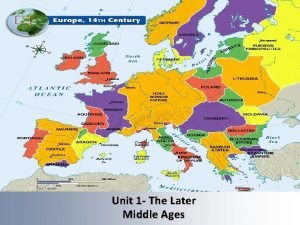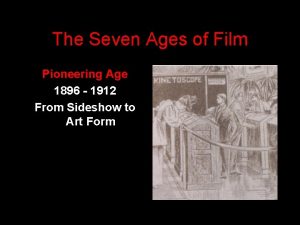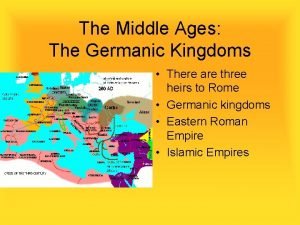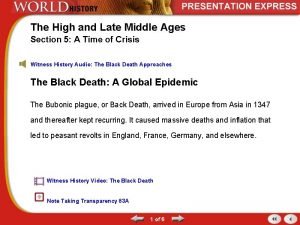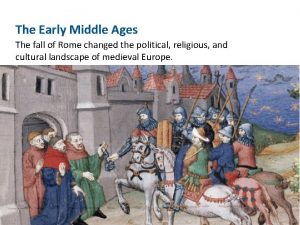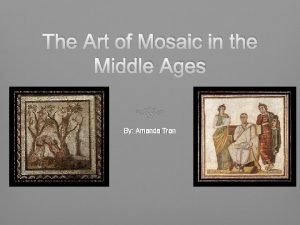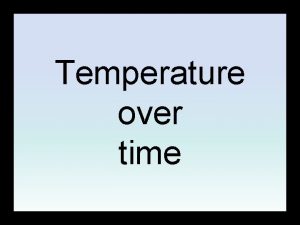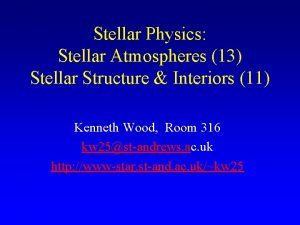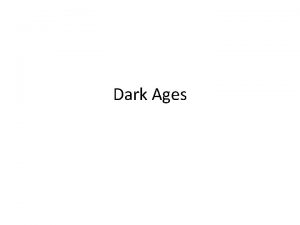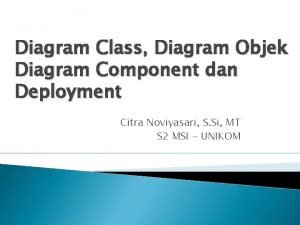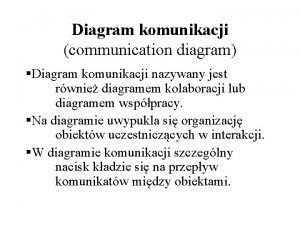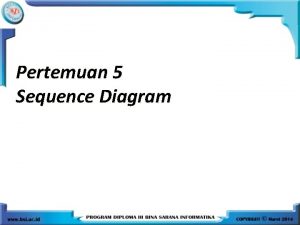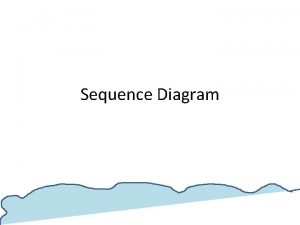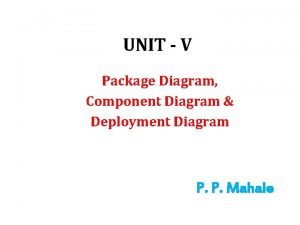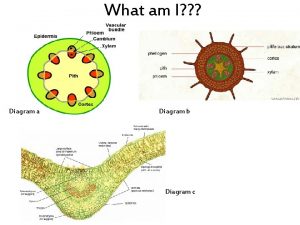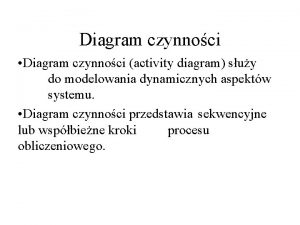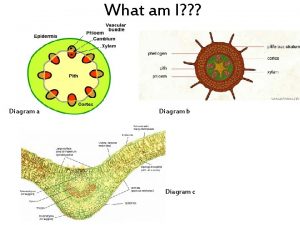HR Diagram L vs T Ages of Stellar



















![Nebular Spectra Emission spectrum of Crab nebula [OII] lines in the blue ~3700 Angstroms Nebular Spectra Emission spectrum of Crab nebula [OII] lines in the blue ~3700 Angstroms](https://slidetodoc.com/presentation_image/6a6b8e07625ee5e15c989a592291ad02/image-20.jpg)















- Slides: 35

H-R Diagram (L vs. T)




Ages of Stellar Clusters Stars in a cluster are born at the same time but with different stellar masses, spectral types and luminosity, and then age differently

The Pleiades Star Cluster

H-R diagram of Pleiades Same age, different masses and color-temperatures

Stellar Luminosity and Mass

Stellar Evolution and Lifetime • Luminosity depends on the rate at which star generates and emits energy • Mass provides fuel for burning ! • From the luminosity-mass relation L ~ M 4 • Lifetime ~ M(star) / Luminosity ~ 1/M 3 • Lifetime decreases rapidly with mass • The most massive stars live only tens of millions of years • O and B stars are ~10 times M(Sun)

Interstellar Medium and Nebulae • How do stars form? • Cold and dark gas clouds coalesce gravitationally • Temperatures and densities rise to those needed for nuclear fusion • Stars are born and ionize nearby regions • Nebulae are regions ionized (electron and ions) by stars, with surrounding neutral gas and dust and grains (heavy elements)

Nebulae are Stellar Nurseries Dark Molecular Cloud Gravitational Contraction Birth of Stars Bright Nebula

Orion Nebula – Stellar Formation

Young Stars in Orion Nebula (The Trapezium) Embedded in the dark Orion Molecular Cloud Hot stars emit UV radiation Ionize HI HII and other Elements (e. g. OI OII, OIII) Ions emit bright emission lines Emission nebula

Stars in Orion Nebula

Star Forming Regions – HST (Time magazine cover photo)

Supernova shock waves and star formation

Interstellar Reddening: Dust scatters blue light so object appear redder Why does the Sunset appears red ?

Interstellar Medium (ISM) • Very low densities: ~ 1 particle per cm 3 • But vast distances so light (spectral lines) traveling through ISM needs to be corrected for reddening • Recall the distance to the nearest star Alpha Centauri ~ 4. 3 pc or ~ 15 Lys • A column of 1 sq cm would contain > 1018 particles up to the Earth

Emission Nebulae • Ionized H+ or HII regions with bright emission lines • Te ~ 10, 000 K, Ne ~ 1000 electrons/cc • Atomic Ions: O+ (OII), O++ (OIII), S+ (SII), etc. • Spectral Line intensities yield physical conditions: temperature, density, etc. • Orion nebula: brightest HII region with young, hot stars • Crab nebula created after a supernova
![Nebular Spectra Emission spectrum of Crab nebula OII lines in the blue 3700 Angstroms Nebular Spectra Emission spectrum of Crab nebula [OII] lines in the blue ~3700 Angstroms](https://slidetodoc.com/presentation_image/6a6b8e07625ee5e15c989a592291ad02/image-20.jpg)
Nebular Spectra Emission spectrum of Crab nebula [OII] lines in the blue ~3700 Angstroms [SII] lines in the red ~6700 A [OIII] line in the middle ~5000 A [. . ] means “forbidden” lines from transitions between closely spaced low-lying levels with low quantum mechanical probability (Pradhan and Nahar , 2011)

Birth of Stars • • Collapsing molecular clouds Fragmentation into varying masses Protostars Protostellar disk Forms star and planets When H-burning initiates, star is born Reaches Main Sequence (Zero-Age-Main. Sequence or ZAMS)

Mass and Stellar Type at Birth Pre-Main Sequence Evolution O, B Super. Giants Red Dwarfs Stellar formation begins on the so-called Hayashi Track where pre-stellar masses begin to contract and eventually light up due to H-fusion and reach the MS

H-R Diagram of Pre-MS Stellar Cluster Many stars have not yet arrived on the MS

Young Pre-MS Stellar Cluster (varying masses, many not yet on the MS)

Proto-star Rotating proto-star disks called Herbig-Haro (HH) objects

Proto-star, disk, and jet (proto-planetary disks form planets)

Magnetic field lines and activity in protostars Charged particles (electrons, protons, ions) follow magnetic field lines as the plasma condenses into a star

Stellar Structure and Interiors • • Recall the 3 different zones in the Sun Core, Radiative Zone, Convection Zone Energy is transported across the interior Stellar structure depends on rate of temperature variation along stellar radius, which determines whether radiative diffusion or convection is to be the primary mode of radiation transport

Structure of the Sun: Three Zones Core, Radiative, Convective

Massive Stars

Solar-Type Stars

Low-Mass Stars

Star Formation in Galaxies

Spiral Galaxy and Arms

Stellar Formation in Spiral Arms
 Dark ages def
Dark ages def Renaissance vs medieval art
Renaissance vs medieval art Stellar evolution diagram
Stellar evolution diagram Stellar evolution diagram
Stellar evolution diagram Hr diagram
Hr diagram Stellar heaven
Stellar heaven Mizar luminosity
Mizar luminosity Stellar motion matlab
Stellar motion matlab Virgo stellar
Virgo stellar Stellar graveyard
Stellar graveyard Life cycle of stars poster
Life cycle of stars poster Iptv hosting
Iptv hosting Stellar assessment
Stellar assessment Stellar saga
Stellar saga What is stellar parallax?
What is stellar parallax? Stellar evolution
Stellar evolution Stellar
Stellar Stellar formation
Stellar formation Stellar asset management
Stellar asset management Stellar evolution
Stellar evolution Abundance of elements
Abundance of elements Stellar evolution
Stellar evolution Stellar wifi
Stellar wifi Stellar alchemy
Stellar alchemy Starter mover flyer ket pet
Starter mover flyer ket pet Greek dark ages timeline
Greek dark ages timeline Map of europe in middle ages
Map of europe in middle ages Middle ages renaissance
Middle ages renaissance Pioneering age of film
Pioneering age of film Germanic kingdom
Germanic kingdom Greek floral design history
Greek floral design history The high and late middle ages section 5 quiz
The high and late middle ages section 5 quiz Early middle ages
Early middle ages Mosaic art in medieval period
Mosaic art in medieval period 5 major ice ages
5 major ice ages Socialization through the life course
Socialization through the life course


